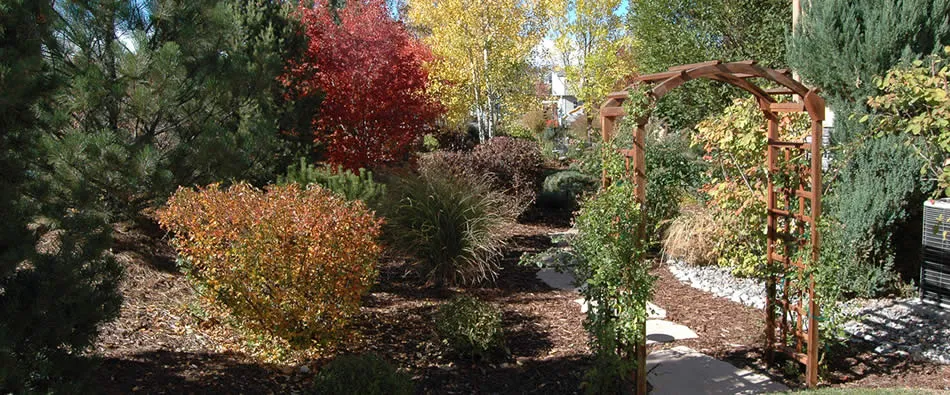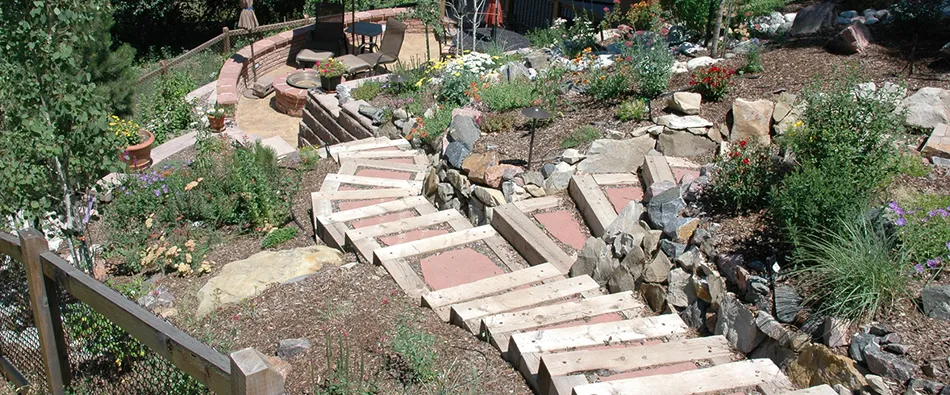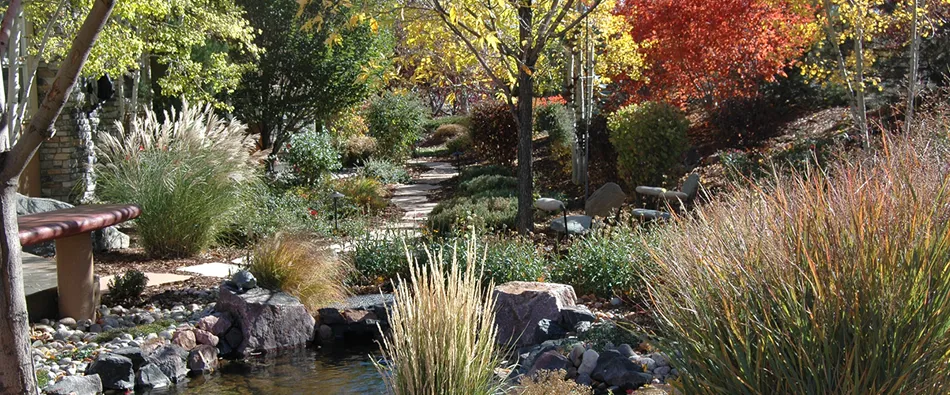Greenhouses can be prefabricated or erected from raw materials, and the variety of shapes, sizes, and construction details offer endless possibilities. Before you start construction, thoroughly investigate the local building codes in your city and county to learn about any possible constraints. Also, if you live in a covenanted community, check with the local homeowners association before you begin construction.
Siting the greenhouse is important for optimal plant growth. Some lots may not allow the flexibility to angle the greenhouse for maximum light-gain in the winter. A southeast orientation or an angle that provides a minimum of three hours of winter sunlight daily is good. Your greenhouse needs protection from the northerly and westerly winds that frequent the Front Range, which may require a windbreak made of plant materials. In addition, greenhouses require utilities, such as electricity and running water. Finally, the greenhouse should be easily accessible from your home.
Greenhouses can be erected directly on the ground with footers placed below the frost line, which is generally three feet along Colorado's Front Range. Other types of greenhouses may have a portable base plate of concrete, wood or metal. A solid permanent foundation may resist settling better than a portable one.
Hobby Greenhouses: Coverings
Covering materials for a greenhouse vary greatly and are determined by aesthetics, maintenance, cost and light infiltration factors.
Glass is the most expensive covering material, but will transmit the most amount of light. Maintenance may become an issue, however.
Greenhouse fiberglass is specially designed for plant growth. It bends over curved surfaces, but needs to be replaced every five to ten years, depending on the quality.
Cost-efficient polycarbonate greenhouse coverings are available in many sizes. This material resists hail damage and allows good light transmission. It also has a small air channel that provides some insulation.
Polyethylene film is the least expensive greenhouse covering and may be installed in a single or double layer. If you use a double layer, you'll need to blow air between the two layers. Poly film provides good insulation, but is the poorest light transmission of all greenhouse coverings. It needs to be replaced every few years.
-------------------------------------------------------------------
Autumn Gold Landscapes, Denver, Colorado






